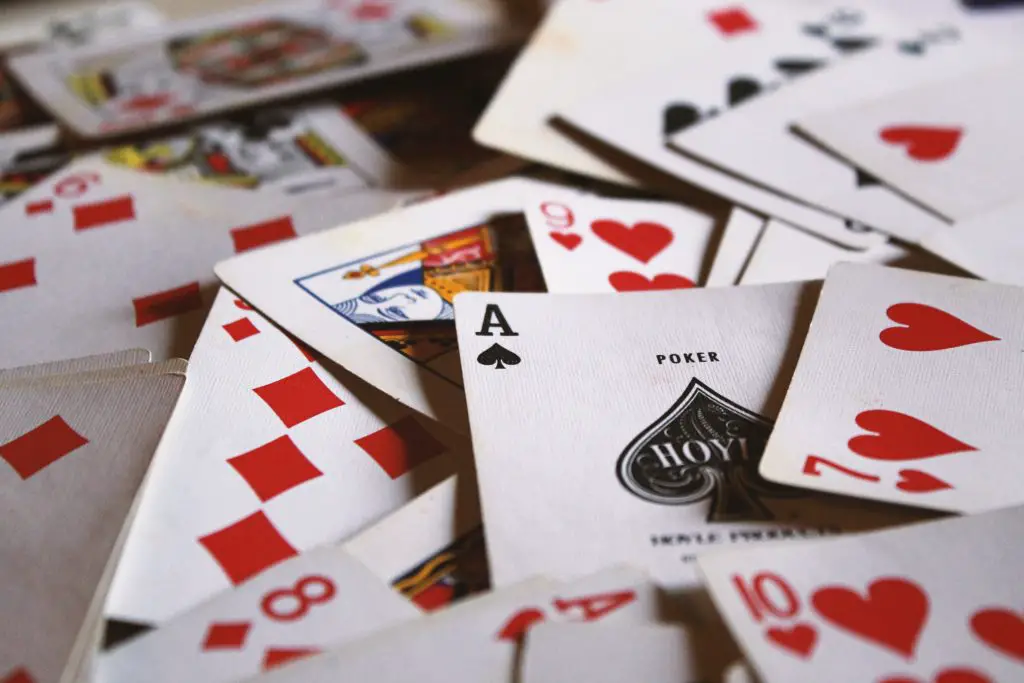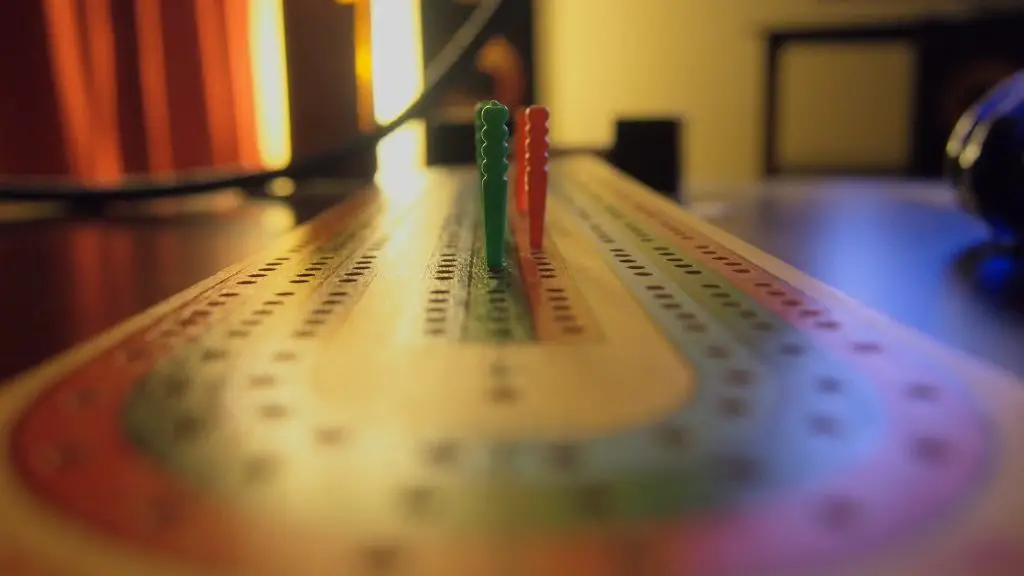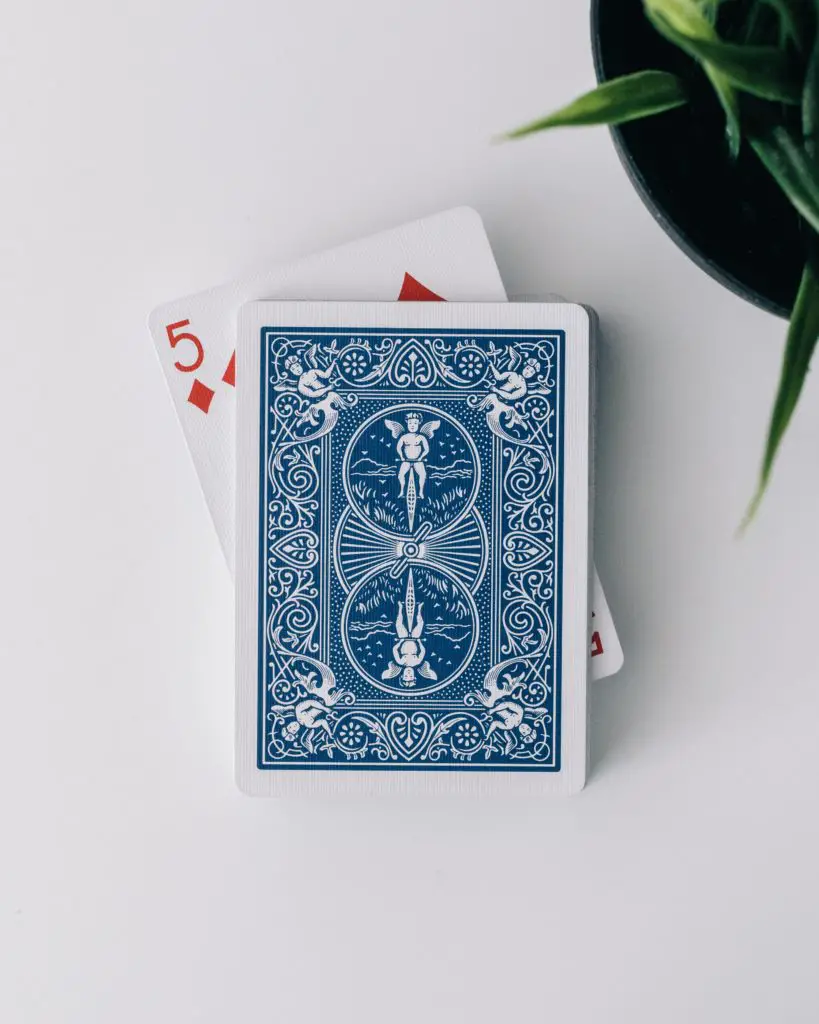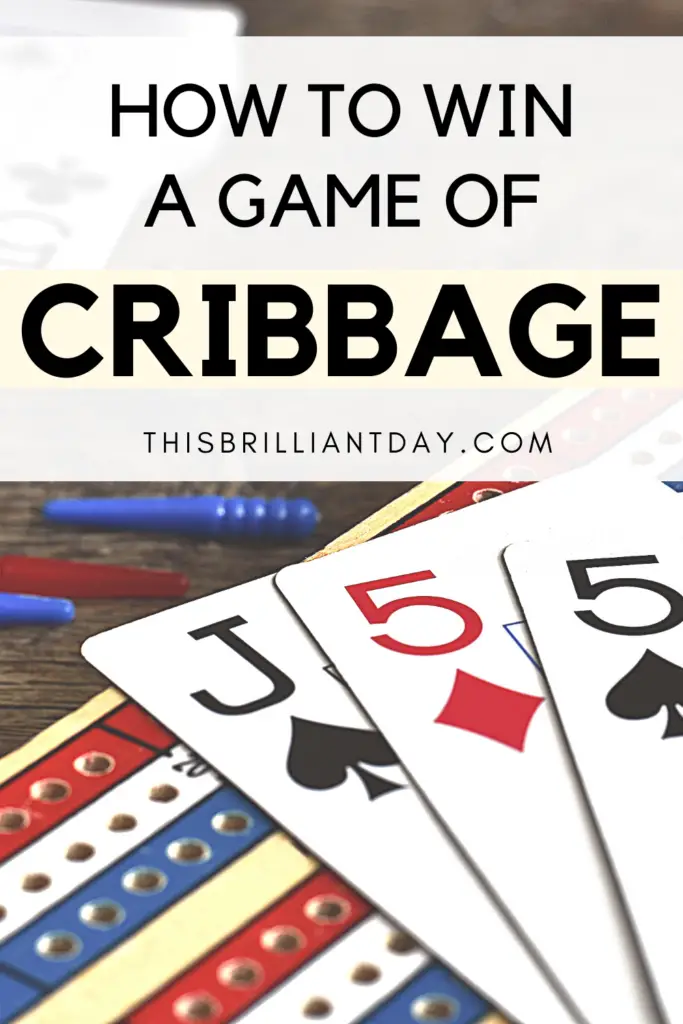In my family, Christmas is a time for bringing out the board games and card games and having some old fashioned family fun. My dad and I are particularly avid players, and one of our favourite games to play is Cribbage. We can often be found sitting at the kitchen table on a winter evening, playing several games in a row.

What is Cribbage?
Cribbage is a card game traditionally played by 2 players (although it can be played by 3 or more). The game features a combination of luck and strategy. It involves scoring points for different combinations of cards in your hand, and in play.
How to Play Cribbage
The purpose of this post is to describe strategies rather than rules. So, if you would like to familiarise yourself with the full rules and scoring of Cribbage, I recommend checking out Wikipedia where the rules are described in detail. However, I will give a basic explanation here.
The Rules
- Players cut to determine who is the dealer first.
- The dealer deals 6 cards to each player.
- Players must keep 4 cards and put 2 face-down into ‘the crib’ which belongs to whoever dealt first.
- The non-dealer cuts for the dealer to reveal another card which is placed face-up on the stack.
- Players take turns to put a card down, keeping a running total up to a maximum of 31.
- Aces are worth 1, Jacks, Queens and Kings are all worth 10.
- Points are scored for pairs, runs, or if the running total reaches 15 or 31.
- Points are recorded using pegs on a scoring board.
- When no more cards can be placed without the total exceeding 31, play starts again from 0. Whoever didn’t play the last card starts.
- This continues until all cards are played.
- Next, the non-dealer shows their hand. Points are scored for combinations of cards in their hand, combined with the card that was cut earlier. These include pairs, runs, flushes and combinations adding up to 15.
- The dealer does the same.
- The dealer shows the cards in the crib and scores in the same way.
- The cards are shuffled, and a new round begins, with the other player becoming the dealer.
- Play continues until a player reaches a pre-determined number of points (i.e. travels round the scoring board a certain number of times). The game ends and this player is the winner!

Cribbage is a really fun game to play but it is quite complicated to get the hang of in the first place. If you haven’t played Cribbage before, I recommend learning the rules, playing the game several times and getting your head around it before you try out the strategies below.
My Winning Strategies
Having played Cribbage for many years, I have picked up a few little strategies along the way. I have never looked up official strategies of Cribbage, so I don’t know whether other players use these or not. I probably still have a lot to learn. This is by no means an official guide to playing your best game of Cribbage!
I have only ever played Cribbage with 2 players, so these strategies all apply to 2 player games. Most of them would apply to 3 or more players too, I imagine.
As with most card games, luck plays a part too. Following these strategies will obviously not guarantee you a win! But they will undoubtedly increase your chances.
So, on to the Strategies!
When choosing which cards to put in the crib…
- When choosing which cards to put into your opponent’s crib, think about what you are giving them, as well as what you are keeping yourself. For example, if you give them a pair then you are effectively taking away 2 from your own score. Conversely, think about putting a good combination of cards into your own crib.
- Aces are good cards to keep in your hand because in play, they often get you points for ‘last card’ and reaching 31.
- If you are near the end of the game and you think that either you or your opponent is likely to win during play (before scoring your hands and the crib), choose which cards to keep based on which cards will help you the most during play (for example, small cards are often useful). This may not necessarily be the best possible scoring hand.
During play…
- Sometimes your opponent will play a certain card and you will have a choice of making either a pair or a 15 depending on which card you play next. For example, they might play a 10 and you might have another 10 or a 5 in your hand. It’s best to make the 15 because then on their next turn they can only potentially make another pair after (in this case another 5), rather than a pairs royal (another 10) which would score them more.
- Avoid starting play with a 5, because there is a high chance of them having a 10, J, Q or K, all of which are worth 10 and would enable them to get a 15.
- If you are choosing between 2 cards and it doesn’t really matter which one you play, think about making sure your opponent can’t get a run. So, choose a non-consecutive card to the last one played.
- You can tempt your opponent to make a 15 if you have a card that would make a run of 3 after. For example, if you have a 7 and a 9 in your hand, play the 7. If they have an 8, they will probably play it to make 15. Then you can play your 9 and make a run of 3, so overall you are 1 point up on them. Whereas if you had played your 9 first, they might play a 6 to make 15, but then you can’t make a run of 3. Likewise, if you have an 8 and a 9, play the 8 first; a 6 and a 7, play the 7 first; a 6 and an 8, play the 8 first.
- If your opponent plays a low card (below a 5) in play, there is a good chance that they have more low cards. So watch out for making pairs and runs because they could very well expand on them by making a pairs royal or a longer run. Instead, break up the pattern by playing higher cards.
- You can start play with a low card (below 5) if you want to stop your opponent from getting a 15. The most they can score on their next turn is 14. In your subsequent turn, you have a good chance of hitting 15 yourself, or else bringing the total above 15. This strategy may be especially useful if your opponent is only a few points away from winning and you are trying to stop them getting many points in play.
- Keep an eye on what cards your opponent is putting down, because this can give you clues as to what their other cards may be. For example, if they play a picture card, chances are they have another picture card or a 5. If they play an 8, chances are they have other cards within the middle range of 6-9. If they have a low card in the range of 1-4, they may well have another one to make a pair, or to add up to 5. This will not always be the case but it can help you weigh up your options of which card to play next.
When scoring your hand and crib…
- Always double check your score. It can be easy to miss something, and even if your opponent notices they may not be kind enough to tell you! By missing something, you are losing points unnecessarily.

It’s Your Turn!
Has this post inspired you to get out the playing cards and have a game of Cribbage? If you have never played Cribbage before, this post has probably blown your mind! However, I really recommend giving it a go because it is a really fun and engaging game to play.
If you don’t have a willing opponent, playing cribbage online is a great way to learn. This site and this site both allow you to play against a virtual opponent. They give you instructions as you go along, so it’s a great way to learn the game quickly.
If you are a seasoned Cribbage player, I hope you picked up some hints from this post that will help you win your next game! Do you have any strategies of your own that I have missed? I would love to hear about them – let me know in the comments!




Sounds like a fun game. I’ve never played before.
I recommend it!
I have never heard of this game before. It sounds interesting! Thank you for sharing!
It’s really good fun, I recommend it! 🙂
I have been playing for 63 years. I learned from watching my mom & dad play on camping trips my dad would beat my mom almost every game. when i started playing my dad I was deter-mend not to lose to my dad… OK I lost a lot of games till I caught on to what my dad was doing. Pretty much as what Sophie has stated. ! day i was playing in a tournament my luck the 3rd player i came up agents was a 8-9 time grand master. his biggest mistake was writing a book LOL we were on our 3 hand when he jumped up and went outside. I waited a few and went to find him and asked him if he was forfeiting the game. He said no he would be in, in a min. Few mins pasted and i had call for a judge, when he came back what i did not till you is that i had 24 hand and a 20 crib. I was pretty happy with that lead. He was sitting on the 13 hole when i did this..I went on to skunk him. he ask me how in the hell did you beat me so bad I said you wrote a book i read it and 2 hands in I knew how you were playing and you just opened the door for me.
Great day of cribbage in my book.
There are some good books on Amazon, and a few duds..
Wow, thank you for sharing your experience! That must have been so satisfying to beat the grand master using his own strategies!
Your description of the rules says that whoever played the last card starts after reaching 31. That is not correct. The other player begins the new count.
My family have always played it where whoever played the last card starts the new count. But I looked up several versions of the rules online and it seems you are right! Thanks for commenting.